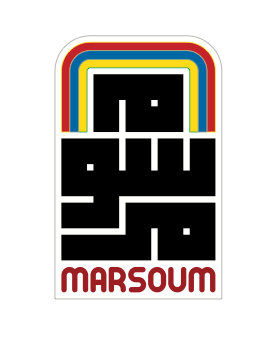
Collector's Handbook: 5 Things You Need To Know Before You Start Collecting Art
Share
So you’ve decided to start building your very own private art collection, but you’re unsure of how to break into this vast and complex world. Maybe you want your apartment to be well suited for your grown up taste so you’re starting to think of a home art collection, or you want to collect pieces that curate your own life’s timeline. Either way, there are a few things to keep in mind while navigating this new and exciting world. Below are some tips for buying art:
1. DO A LITTLE BIT OF RESEARCH
There is a multitude of art forms available to suit any personal preference or style. It can even feel a little overwhelming if you’re unsure of what type of art really draws you. Whether you’re starting out by doing some research online, or at an art gallery, try to develop your own personal style by genuinely seeking out art that attracts you the most. Even flipping through an art history book might provide a bit of insight into what you may naturally gravitate towards.
Creating somewhat of a plan or your own art buying guide that includes your budget or price point, art medium, and dimensions of the space you want to fill your artwork with, will help ease a bit of that apprehension when starting out with your private art collection.
2. FIGURE OUT YOUR BUDGET
Art can be found at any price. The notion that only artwork that costs more than your entire life savings is considered ‘real’ art is false. Art by an emerging artist can even be found for as little as $200 for edition prints, or under $1000 for original works! Be honest about your budget, and stick to it. Again, it is important to do a little bit of research before deciding on the budget. Read more about the artist, and compare the artwork with that of another artist’s with a similar background or profile. Visit different galleries, either online or in-person, to see what your desired art medium is normally going for. Set the range you’re comfortable with it, and compare your options and outlets.
3. LOOK FOR INSPIRATION
Art is not only beautiful to look at when it’s hanging on the walls of your home, it can also be therapeutic to marvel at while it lives in a gallery, a museum, an art fair, or even online. Finding inspiration when it comes to art can truly come from anywhere. Consider starting out by collecting art books for inspiration. More seasoned collectors also often attend art fairs such as the Affordable Art Fair NYC, or Art Los Angeles Contemporary. Art fairs are packed with art, and art dealers, but even as a beginner don’t be afraid to visit one, ask questions, and maybe even develop a relationship with one specific gallery that you start visiting outside the fair. Just look at art wherever and whenever you can. If an art fair in your city is not an option, cultivating a relationship with an online art gallery can also strengthen your knowledge and inspiration. Subscribe to marsoum.co’s newsletter, to become an insider on the latest art news, find emerging artists, read the art journal, and become part of a community with a shared interest. Your home art collection will develop naturally, and with time.
4. BUY ART FOR KEEPS, OR KEEP YOUR RECEIPT!
Buy art for yourself. When you first start collecting, don’t buy art with the sole purpose of flipping it. Buy art that you love and you want as part of your life. Young buyers should always try and get as much information as possible when making a purchase. Try to get the artist’s backstory when creating their piece, understand the artwork’s history, where it has been, and the artist’s note, if possible. If later on you choose to sell or trade your art, documentation will add a lot of value, especially if you’re looking into collecting antique prints.
5. FIND YOUR STYLE
Anything you buy ends up being a reflection of who you are and your own individual style. Find art that really speaks to you. Art can be a part of your life for a very long time. Trust your instincts, and if your heart is in it, just go for it. There’s no one single and true art collection definition, there are no rules. You’ll become more comfortable with the buying process and understanding your personal style as time goes on. There is no secret formula for knowing what the upside of the curve holds unless you’re an insider with years of experience -if that, so after doing your bit of research, understanding your style truly comes down to what genuinely and truly draws you in.
Published On: January 28, 2018
Written By:
Jeeda Masoud

Jeeda Masoud is a digital content writer, blogger, and freelance copywriter. She's known for her love of words, but is also an avid traveler. Her writing style comes from exploring unique ways to design conversations.
Check out more of Jeeda’s work at jeedamasoud.com
